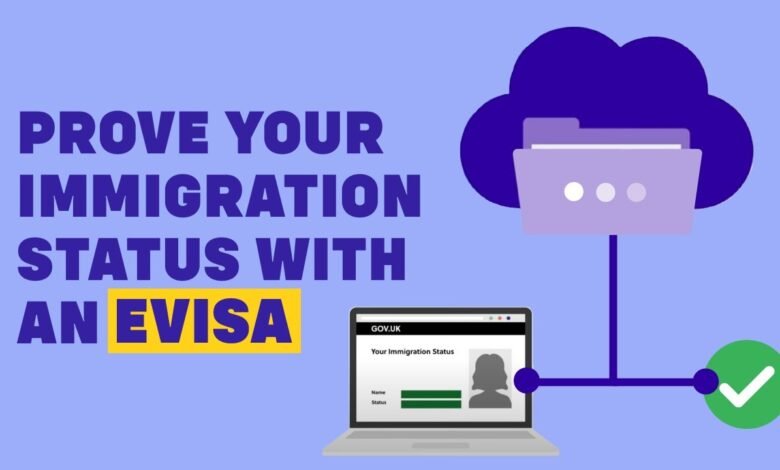Understanding Immigration Status: Key Insights for Individuals and Families

Introduction
Immigration status is a crucial concept that affects millions of people worldwide. It determines the legal standing of an individual in a country where they were not born or do not hold citizenship. Having a clear understanding of one’s immigration status is essential because it influences access to employment, healthcare, education, and social benefits. For many, immigration status can also affect family dynamics, travel, and long-term residency prospects. Governments categorize immigration status in different ways, including temporary, permanent, or undocumented, and each category carries distinct rights and responsibilities. Misunderstanding one’s status can lead to legal complications or limit opportunities, which is why accurate knowledge is vital. This article provides an in-depth look at the concept of immigration status, types of status, their implications, and commonly asked questions, helping readers navigate this complex but important subject.
What is Immigration Status?
Immigration status refers to the official recognition of an individual’s legal position in a country where they are not a citizen. It essentially defines the rights, obligations, and limitations that a person faces based on their entry method, visa type, or residency permit. Immigration status can range from temporary permissions, like student or work visas, to permanent residency or citizenship. The status determines eligibility for work, public services, travel permissions, and legal protections under national law. Governments maintain strict records of immigration status to manage borders and ensure compliance with legal frameworks. Understanding the nuances of immigration status is important not only for legal reasons but also for planning life events such as education, employment, and family relocation. Being well-informed helps individuals avoid violations that could result in fines, deportation, or denial of future immigration benefits.
Types of Immigration Status
Immigration status can generally be categorized into three main types: temporary, permanent, and undocumented. Temporary status typically includes visas for work, study, or travel, and comes with an expiration date. Permanent status, often called lawful permanent residency, grants long-term rights to live and work in the country indefinitely. Some countries also allow permanent residents to apply for citizenship after a certain period. Undocumented or irregular status occurs when a person resides in a country without official authorization, often due to visa expiration or entry without inspection. Each type of status comes with specific rules and limitations. Temporary residents might face restrictions on employment or access to government benefits, while permanent residents enjoy more stability but must comply with residency obligations. Understanding these types allows individuals to make informed decisions about their legal options and long-term planning.
Importance of Knowing Your Immigration Status
Knowing your immigration status is critical because it directly affects your legal rights and opportunities. Your status determines eligibility for employment, education, healthcare, and social benefits, and impacts your ability to travel internationally. Ignorance of status or failure to comply with visa requirements can result in severe consequences, including fines, deportation, or future inadmissibility. Additionally, understanding your status helps with long-term life planning, such as applying for permanent residency, citizenship, or family sponsorship. Legal clarity can also reduce stress and ensure access to resources that might otherwise be unavailable. For employers and educational institutions, verifying immigration status is essential for compliance with regulations. Overall, staying informed about your immigration status empowers individuals to exercise their rights responsibly while avoiding unnecessary legal risks.
Common Challenges Related to Immigration Status
Individuals may face several challenges concerning their immigration status. These challenges include visa expirations, misunderstandings of rights and obligations, complex application procedures, and changes in immigration laws. Many people also struggle with accessing healthcare, housing, or employment due to unclear status. Undocumented individuals face heightened risks, such as limited legal protections, fear of deportation, and difficulty obtaining financial services. Even temporary visa holders might encounter obstacles, such as restrictions on changing jobs, limited study options, or difficulties traveling abroad. Addressing these challenges requires understanding the legal framework, seeking guidance from immigration authorities or attorneys, and staying updated on policy changes. By anticipating potential problems, individuals can take proactive measures to maintain legal status and reduce stress associated with uncertainty.
How to Check and Maintain Your Immigration Status
Checking and maintaining your immigration status involves monitoring your visa, permit, or residency documentation regularly. Individuals should keep track of expiration dates, renewal requirements, and any conditions tied to their status. Engaging with official government portals or immigration offices ensures access to accurate information. Maintaining status may also involve complying with reporting obligations, updating personal information, and avoiding unauthorized employment or travel. Legal advice can be crucial, especially for complex cases like transitioning from temporary to permanent residency or applying for citizenship. Staying organized and proactive reduces the risk of violations that could jeopardize future immigration benefits. Regular review and adherence to regulations help individuals maintain lawful presence and protect their long-term rights in the host country.
Conclusion
Immigration status is a fundamental aspect of life for non-citizens, influencing rights, responsibilities, and long-term planning. Understanding the different types of status, the importance of legal compliance, and the challenges associated with maintaining status is essential for anyone living abroad. Staying informed empowers individuals to navigate complex immigration systems responsibly, avoid legal complications, and take advantage of opportunities for employment, education, and family life. Regularly checking and maintaining your immigration status is a practical and necessary step for long-term stability and peace of mind. By prioritizing awareness and compliance, individuals can build a secure and legally sound future in their chosen country.
FAQs About Immigration Status
1. How do I know my immigration status?
You can determine your status by checking official documentation, such as visas, residency permits, or entry stamps. Government portals often provide information about your current legal standing.
2. Can immigration status change over time?
Yes, status can change due to visa renewals, transitions from temporary to permanent residency, or legal adjustments such as naturalization or sponsorship.
3. What happens if I overstay my visa?
Overstaying can lead to fines, deportation, or future inadmissibility. It’s crucial to apply for extensions or consult authorities before expiration.
4. Is immigration status the same as citizenship?
No, immigration status indicates legal residence rights, while citizenship confers full political and social rights, including voting and passport issuance.
5. Can I work with any immigration status?
Work eligibility depends on your status. Some visas allow employment, while others, like certain student or visitor visas, restrict work opportunities.
